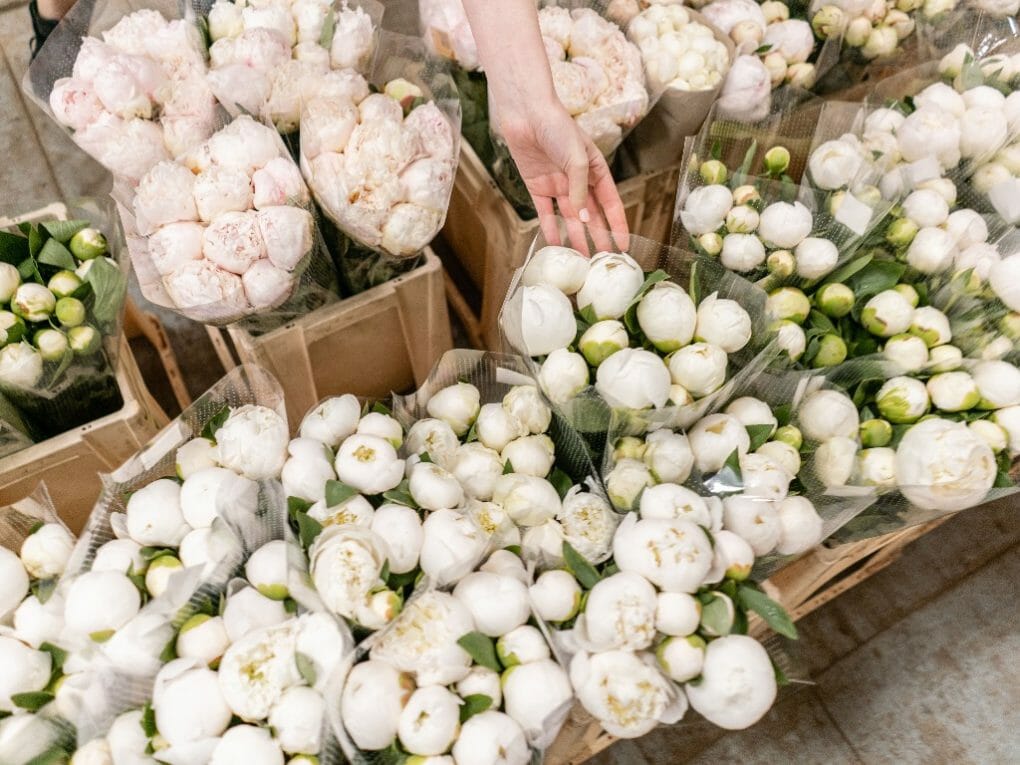Growing Peonies In Pots | Plant Care You Should Learn

Container-grown peonies are becoming increasingly popular, as they offer an affordable way to enjoy the beauty of these flowers without having to fuss with maintenance. While there are a few things that you will need to take into account when growing container-grown peonies, the process is relatively easy and carefree. In this post, we’ll outline the steps you need to take to get started with container-grown peonies and explain why they’re such a popular choice for flower lovers.
Peonies are a stunning addition to any container garden, and the good news is that cultivating them in containers isn’t too difficult. Check to see that there is enough space for peonies in your region. They do best when cultivated in climates that receive between 500 and 1,000 chill hours per winter. That indicates that the temperatures need to be in the range of 35 to 45 degrees Fahrenheit.
If you try to cultivate peonies in USDA zones 8-9, you risk not receiving sufficient chill hours, resulting in the plants’ refusal to produce flowers. If you prefer to grow your peonies in containers instead of the ground, here are the steps you need to follow.
Table of Contents
How to Plant Your Peonies in Pots
Select the Ideal Container for Your Peony
In early spring, plant peonies in pots. To give the peony ample room to grow, place it in a container with a diameter of at least 1 foot (0.3 m) and a depth of between 1 1/2 and 2 feet (0.6 m).
Larger varieties will require an even larger pot. Additionally, the bottom of the container must feature multiple drain holes.
Additionally, gardeners should be aware that these plants respond poorly to being transplanted and should be grown in large containers from the beginning. Consequently, a 5-gallon (18.9 L) container is ideal for growing peonies.
Put about half-fill the container with potting soil containing peat. To check the depth, place the tuber atop the potting soil. No more than 1 to 2 inches (2.5 to 5.1 cm) of soil must be on top of the tuber. When the correct depth of potting soil has been reached, thoroughly saturate the soil with water.
Since of their size, peonies require a sizable plot of land to flourish. The most common gardening faux pas is using a too-small container. If possible, go with a container 18 inches deep and as wide as possible.
Most likely, a larger pot will be required. Their extensive root system befits a large bush that can grow to 4 feet. If the plant appears to be root-bound, monitor its progress and transfer it as soon as possible.
There must be many drainage holes in the container. Excess water can cause tuber rot in peonies, killing the plants.
If it freezes outside, you should store your food in containers that can withstand the cold, like those made of plastic, clay, or wood.
Heavy containers are preferable because even high winds cannot blow over them. In their natural habitat, peonies can reach heights of several feet.
Determine a Suitable Location for the Container

The container should be placed before it is filled. Large containers are required for peonies, making them cumbersome once planted.
In the summer, peonies prefer full sun or partial shade that gets a lot of afternoon sun.
Put the pot on wheels if you’re not sure if you’ll need to move it or not.
The best results come from cultivating peonies outside, but some still choose to do so indoors. Peony plants require a lot of sunlight, so if you want to grow them in your home, position them near a south or west-facing window.
Peony plants grown indoors require supplemental artificial light in addition to natural sunlight to flourish. A multi-bulb fluorescent light fixture, such as a grow light, can be used.
Fill The Pot With the Right Kind of Soil
Peonies are somewhat particular about their growing conditions, so you must pay close attention. The soil must be loose and well-draining, fertile and abundant.
You can use a mixture of 50 percent topsoil, 25 percent compost, and 25 percent perlite. Perlite encourages drainage.
Peonies should be grown in a mixture of soilless potting soil and garden compost. You can find soilless commercial potting soil in stores.
An alternative option is a 50/50 mixture, producing a nutrient-rich environment.
When planting peonies, incorporate some granular fertilizer with controlled release.
When the peonies begin to grow in the spring, you must remove some potting soil from the surface and replace it with new ones.
Fill the Pot with Peonies
Peonies are tubers that can be planted either in the spring or the fall. In the fall, the plants have time to establish themselves before the ground freezes, so this is the preferred time, according to some.
Keep in mind that spring planting won’t provide the necessary chill hours for peonies to bloom.
If you have firm, healthy tubers, you can plant them in the spring or fall. If you want to plant in the autumn, you should do so at least six weeks before the typical first frost date.
Make sure the container is nearly full before closing it. Just an extra inch or two on top is all you’re planning. Plant the tubers with their “eyes” or growth buds pointing upward. It would be best if you buried them between 1.5 and 2 inches deep.
Since these are tubers, the depth is crucial. In other words, if you want flowers, you shouldn’t plant them too deeply. Peony tubers that are planted too deeply rarely produce flowers. You should water it so much that it runs out of the bottom holes.
Care For Container-Grown Peonies
Container-grown peonies are a beautiful addition to any garden, but they require special attention. Follow these tips to ensure that your container-grown peonies are healthy and thrive!
Regularly Water Your Peonies
Keep your peony moist. Peonies only need their soil replenished if the top inch of soil becomes dry. Once the water can be quickly drained from the bottom of the pot, pour it evenly over the potting mix.
Provide Sunlight
Your peony will thrive if you provide it with some bright light. Place the pot outside in a sheltered area where the peony can receive at least six hours of sunlight per day. For peonies to thrive and flower, there must be a lot of light. When cultivating a peony indoors, it is best to position the pot, so the plant faces a south or west window.
Supplement the Sunlight With a Grow Light
To complement the sunlight, a grow light will be required. Place two special full-spectrum 40-watt fluorescent bulbs and two cool white 40-watt bulbs in a four-bulb fluorescent light fixture.
Feed Your Peony
Your peony will thrive with the help of houseplant fertilizer. As soon as the peony’s new stems grow, start fertilizing it every four weeks like a houseplant. Since the peonies are being grown in a pot, you must use houseplant fertilizer rather than fertilizer meant for garden plants. Use a fertilizer that may dissolve in water. The fertilizer should be applied after each routine watering. Stop applying fertilizer sometime in the middle of the summer.
Provide Resting Period

Get your plant ready for its rest. Reduce how often you water the peony as summer winds down. To help the peony hibernate for the winter, let the soil dry up entirely before watering again. Peonies need at least two to three months of dormancy before being planted again. Reduce the amount of artificial light the peony receives gradually as the days get shorter in autumn if it is cultivated inside. Keep the peony outside until after the first frost, if possible.
Prune
The plant’s stems should be trimmed and placed in a dark, cool place. Cut the entire plant down to the ground using hand pruners at the first sign of leaf yellowing and death. Put the kettle in a cold basement or unheated garage. Wait until spring, when the weather is warmer, and bring it back. Position it in direct sunlight, outdoors, or on a bright window sill, and give it plenty of water.
